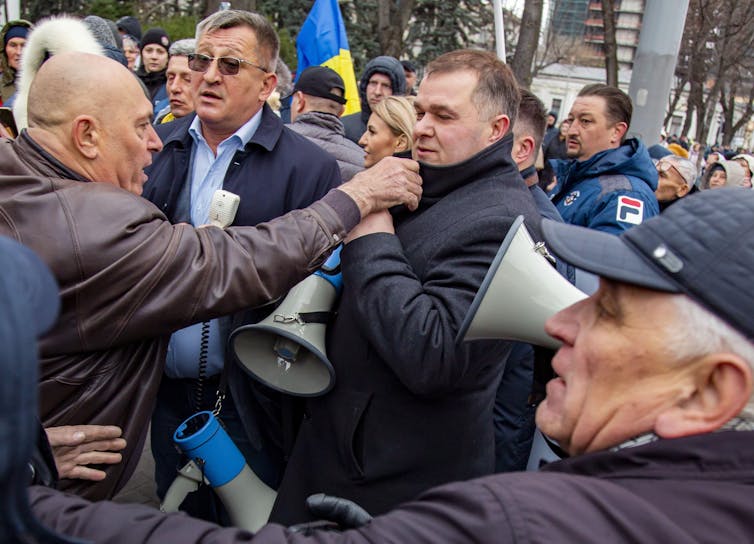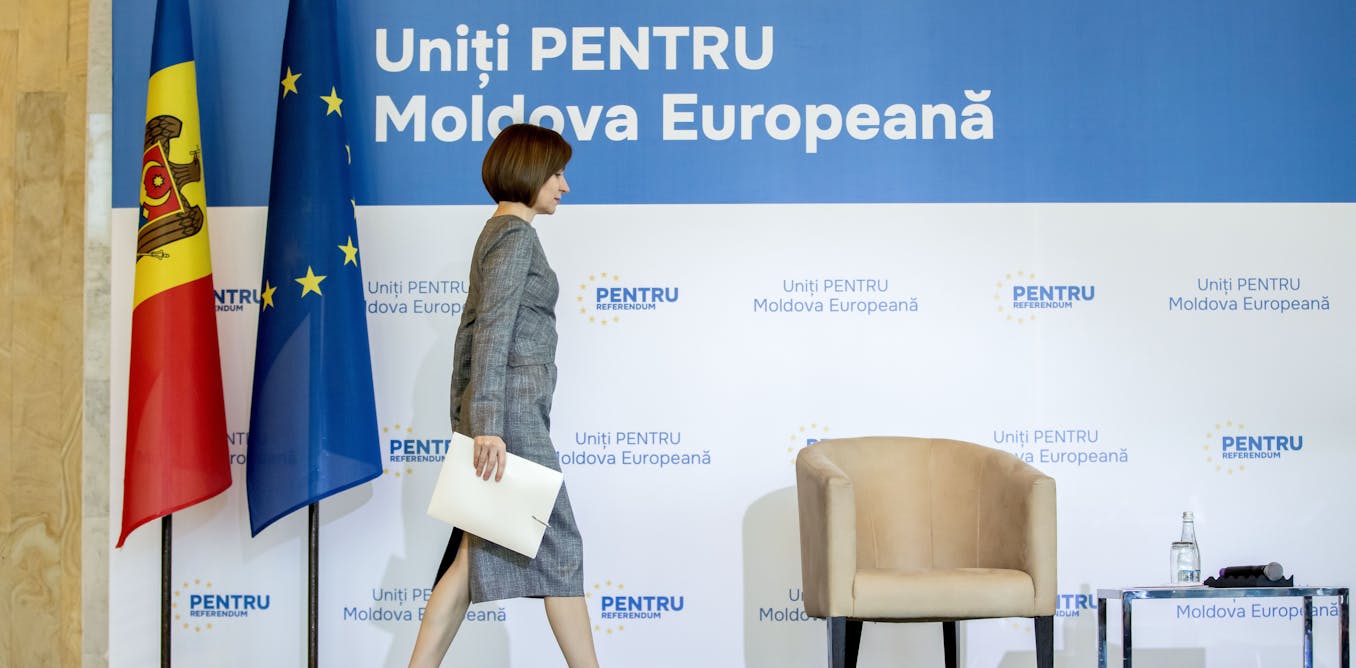In mid-February, the leader of Moldova’s breakaway region of Transnistria, Vadim Krasnoselsky, summoned deputies “of all levels of the Pridnestrovian Moldavian Republic”. The purpose of their meeting, he announced, would be to discuss “pressure from the Republic of Moldova that is violating the rights and worsening the socioeconomic situation of Transnistrians”.
The meeting was set for February 28, the day before Vladimir Putin’s “state of the union” address. This was taken by some – including the influential Washington-based thinktank the Institute for the Study of War – to signal an intention to announce that Transnistria would formally declare its intention to join Russia.
The Transnistrian congress met as planned. But its resolution, while full of praise about Transnistria and complaints about Moldova, fell well short of expectations. In the end, the assembled deputies merely appealed to Russia – as well as the Interparliamentary Assembly of States Parties of the Commonwealth of Independent States, the UN, the EU, the Organization of Security and Co-operation in Europe, and the Red Cross – to protect Transnistria and prevent an escalation of tensions with Moldova.
Transnistria declared independence from the Moldovan Soviet Socialist Republic in 1990, as the dissolution of the Soviet Union was gathering pace. A brief violent conflict ended with a Russian-mediated ceasefire in 1992. This ceasefire mandated negotiations on the reintegration of Transnistria into Moldova, which included, among others, Russia and Ukraine. Efforts to agree on a deal proved futile over the following three decades and have completely stalled since Russia’s full-scale invasion of Ukraine in February 2022. Thus, the Transnistrian region of Moldova has remained in a limbo state for more than 30 years now. Its separate identity is not even recognised by Russia and it remains formally part of Moldova.
This limbo state has contributed to fears – in Moldova and the west – that Russia has territorial ambitions in the region. These have worsened since the invasion of Ukraine two years ago. Talk of Kremlin-backed plots to destabilise the country is not uncommon.
In the event, the Russian president failed to mention Transnistria even once in his state of the union address the day after deputies had gathered in Transnistria. With the initial “excitement” of a potential crisis around Moldova gone, the predominant view among regional and international analysts was that this was a storm in a tea cup rather than a full-blown crisis.
This is also the view of Moldova’s foreign minister, Mihail Popșoi. In an interview with Politico at the beginning of March, a month after taking office, Popșoi said that “the probability that the Russians would be able to advance and reach our territory is much lower now than it was two years ago”.
Russian ambitions
But this is, at best, only half of the more complex geopolitical context in which Moldova finds itself. Wedged between Ukraine and Romania, a member of Nato, Moldova’s future prospects are heavily intertwined with the outcome of the war against Ukraine. At present there appears to be little chance of Russia expanding its land bridge to Crimea all along the Black Sea coast to the Ukrainian border with Moldova. But that’s not to say that the Kremlin has completely given up on this ambition.
Just days after the deputies’ meeting in Transnistria, the Russian foreign minister, Sergey Lavrov, complained about Moldovan violations of Transnistria’s rights. He alleged Moldovan discrimination against the Russian language as well as economic pressure on the Russian enclave. This eerily echoes Russian justifications for the invasion of Ukraine both in 2014 and 2022.
Transnistria is not the only card Russia is playing. Four days after Lavrov’s comments, Putin met the leader of the Gagauzian region in Moldova, Yevgenia Gutsul, at the so-called World Youth Festival, which was held near the Russian Black Sea resort of Sochi at the beginning of March.
Institute for the Study of War
Gutsul – and other powerful Russian allies including the fugitive Moldovan oligarch Ilan Shor, who was convicted of fraud in the “theft of the century” of US$1 billion (£792 million) from three Moldovan banks a decade ago – have been fomenting protests against the Moldovan government since September 2022. These protests reflect many ordinary Molovans’ existential fears over a cost-of-living crisis that has engulfed one of Europe’s poorest countries since the COVID pandemic and has worsened since the Russian aggression against Ukraine.
Moldova’s European aspirations
At the same time, the Moldovan president, Maia Sandu, has proposed a referendum on joining the European Union. Sandu, who faces a reelection campaign later this year, hope that this will boost her popularity among Moldova’s generally – but not unequivocally – pro-European electorate.

Viktor Mogyldja/Kommersant/Sipa USA
Wanting to capitalise on popular discontent with economic conditions in Moldova, Russia has been supporting Shor’s protests and linking the unrest to Sandu’s pro-European foreign policy. Relying on allies in both Gagauzia and Transnistria, Moscow’s aim is primarily the destabilisation of the country ahead of presidential elections at the end of 2024 and parliamentary elections in the spring of 2025.
In this context, even non-events such as the resolution passed by the Transnistrian deputies at the end of February are useful to Moscow. They increase uncertainty not only in Moldova but also among the country’s western allies. And this feeds into a broader narrative in which a status quo that has been stable for decades is suddenly questioned – with potentially unpredictable consequences.
There is no evidence that the Kremlin has any concrete plans, let alone any capabilities, for military action against Moldova. Nor does it need to, as long as it has local allies to do its bidding against the country’s president and her government. This does not give Moscow a lot of leverage in its war against Ukraine but it is helpful in the broader efforts to weaken support for, and from, the European Union.
The more Russia can peddle a narrative that connects European integration with economic decline and constraints on language and cultural rights, the more division it can sow – and not just in Moldova, but potentially also in other EU candidate countries from the western Balkans to the south Caucasus.


